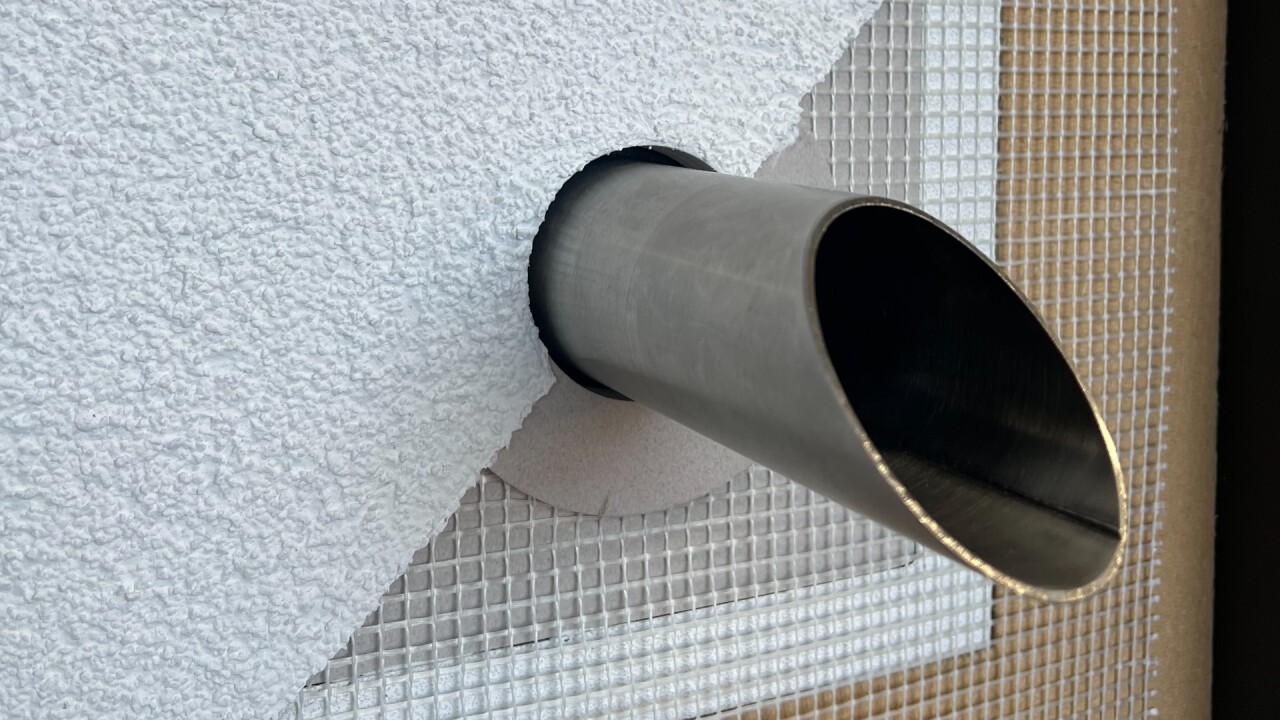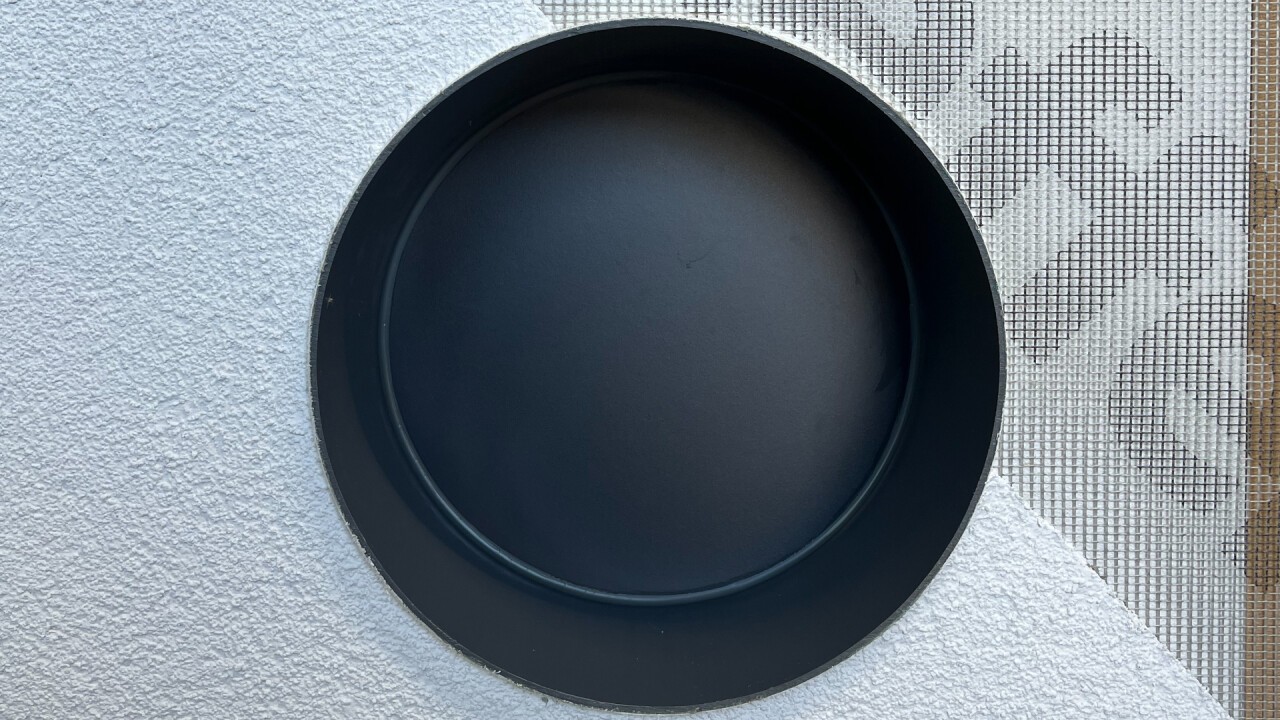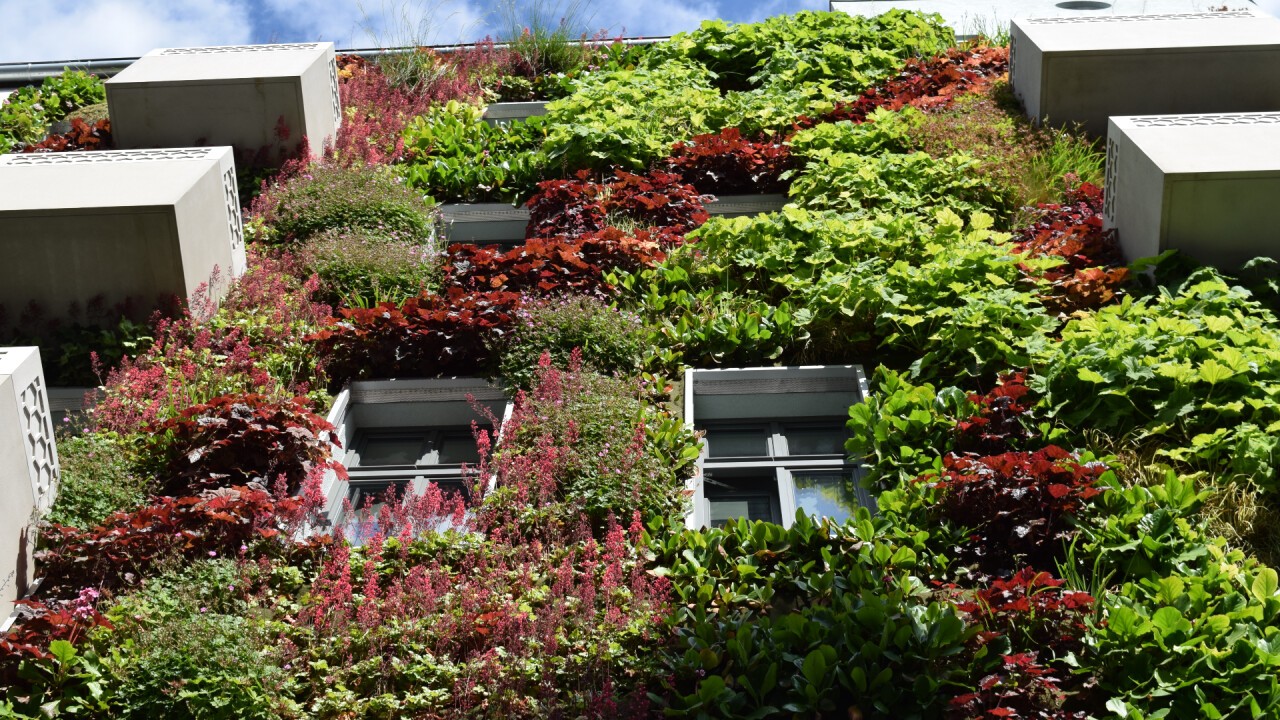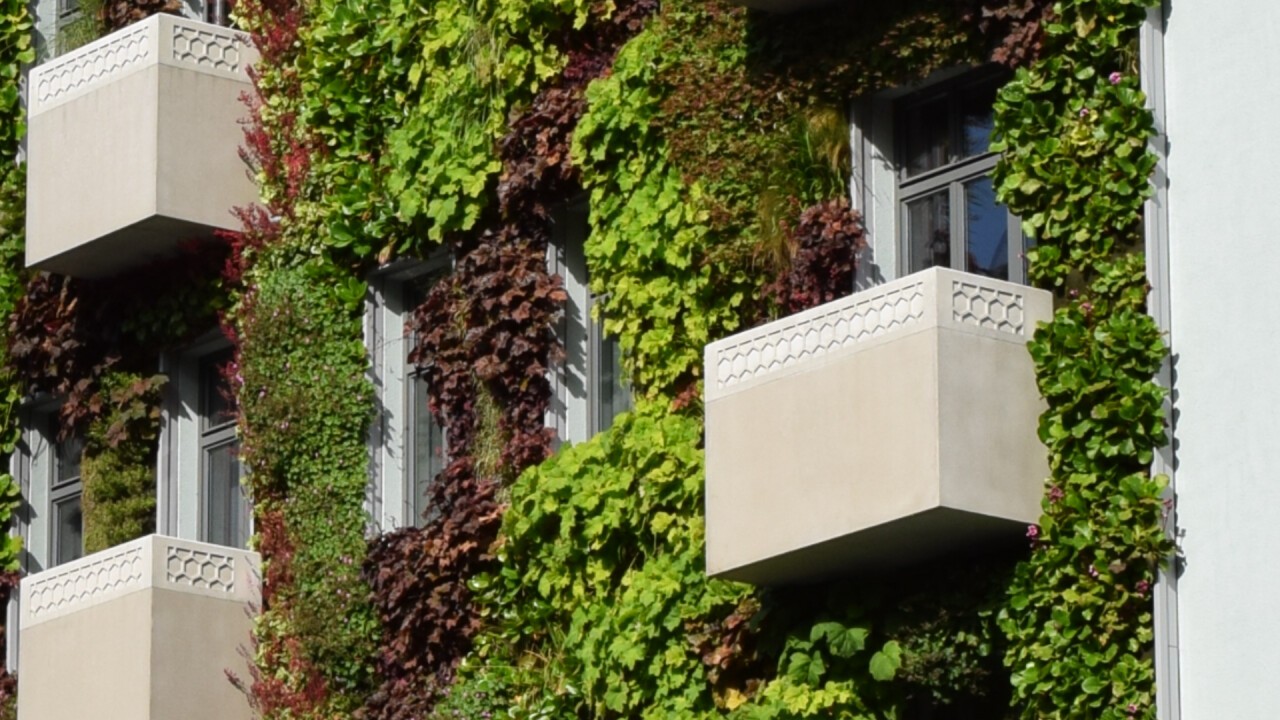Expertise FAF 2024
Next generation facade
With prefab solutions for climate-robust construction, wall-bound facade greening and energy-efficient insulation materials from sustainable forestry, Meffert AG offers forward-looking solutions for the growing challenges of the construction sector.
-
Greened facade -
Greened façade -

Building drainage -

Wall duct suitable for central or decentralized building ventilation and for heat pumps, among other things.
Next generation facade - building resiliently, smartly and aesthetically today and in the future
Meffert AG offers a wide range of solutions for the challenges of tomorrow. In addition to current functional requirements such as heat protection in summer and thermal insulation in winter, as well as the use of trendy dark colors that do not heat up the surface too much, we already offer cross-trade system products for climate protection today. Our solutions are based on the principles of sustainability, circular economy, functionality and the approaches for climate-resistant construction and renovation.
Making buildings resilient with prefabricated prefab solutions
Although CO2 emissions in Germany have fallen continuously since 1990, forest fires, extreme weather events and heat records are on the rise. Just as we humans will adapt to the new conditions, buildings must also be adapted to climate change when planning and renovating - buildings must be made resilient.
Weather extremes and the associated increase in rainfall, for example, may require flat roof or emergency drainage on roof terraces or other measures. Up to now, such cross-trade facade details have usually been the subject of time-consuming discussions for each construction site. Who plans these integrated ETIC system wall penetrations and who assumes liability in the event of a defect?
With prefabricated products, the planner and specialist company purchases security and productivity. It can now be planned in a visually appealing way and integrated into the ETIC system. Such detailed solutions are holistic, i.e. in the installed state, system-tested by an independent body and can be implemented by the facade builder in a value-adding manner. Incidentally, the use of such components or modules reduces delays in construction progress and potentially less stress and hassle on site. The entire construction process is accelerated and does not get bogged down in details. It saves the customer money and with secure all-in-one solutions, our industry can continue to build up a good image and expertise in the long term.
Wall-mounted facade greening modularly scalable
Living space is scarce. In addition to new buildings, vertical densification - i.e. in height - is taking place in urban centers wherever possible. Roofs are being converted into living space. Space for green areas is a scarce commodity. This shortage can be compensated for with facade greening and not only improves the microclimate. Shading and evaporation mean that green surfaces do not heat up as much and evaporation has a demonstrably cooling effect.
Vegetation also helps to filter and bind air pollutants. This greenery can also be a home for insects and reduce sound reflection. Thanks to a growing number of municipal funding programs, facade greening is also becoming increasingly attractive in terms of investment costs. In addition, the recreational factor of urban green spaces has already been investigated in studies. One result: the immediate proximity to green spaces has been proven to help reduce the risk of cardiovascular disease and sleep disorders.
We offer special installation elements that can be seamlessly integrated into ETIC systems. These elements are designed for wall-mounted facade greening and can be scaled modularly. They enable flush integration into the ETIC system or the facade element.
Insulation is the first step towards the energy transition
The German government's goal of achieving greenhouse gas neutrality by 2045 has been published. The efficient use of renewable energies requires low flow temperatures in heating mode. A poorly insulated building envelope leads to energy losses, which is why buildings should be upgraded to the NT-ready standard before the conversion and can be subsidized via grants or loans as part of an individual renovation roadmap. An energy consultant can help with this. Low-temperature-ready is the prerequisite for switching to renewable energies.
Insulation material from sustainable forestry
The Meffert AG Group also relies on biogenic wood fiber insulation materials, which are produced from sustainable forestry and contribute to climate neutrality. By storing carbon in the wood as it grows, these insulation boards bind CO2 (carbon dioxide) and contribute to the energy transition. For example, ETICS systems with wood fibers can bind around 1.4 t of carbon and thus approx. 5.3 t of CO2 for a 150 m² facade surface and 20 cm board thickness. As with conventional insulation materials, products made from wood fibers are also regulated in the DIN EN 13171 standard. A general building authority approval is required for the use of wood fiber insulation, which we offer. Regardless of the type of insulation material selected, the energy required for production is always offset by significantly higher savings during operation.
Pre-assembled elements for even greater process reliability
As an industrial partner, we also offer various advantages. Insulation elements can be industrially prefabricated in a wide variety of contours, shapes, thicknesses and insulation material types - round, curved, precise, individual and waste-reduced with the highest degree of automation and delivered directly to the construction site. Prefabricated reveal panels and Meffert system solutions for the sealing level of window sill systems are also options for further process reliability and optimization on the construction site.
Functional facades support smart solutions
The functionality of facades has evolved and now includes the integration of aesthetic door intercom systems as part of home automation and the generation of energy on the facade using PV elements, e-charging stations and much, much more.
Parametrically optimized solar facades can increase the energy yield and the flush-mounted integration enables construction according to the principle of aesthetics and climate-robust construction. In addition, species protection must also be taken into account in facade design. Integrating nesting boxes and bee hotels into the facade can help to preserve the habitat for animals.
The Federal Nature Conservation Act often requires the creation of replacement habitats. It is therefore advisable to contact nature conservation associations in advance. The experts know the flora and fauna in the vicinity of the property and can assess the necessary type, quantity and location.
NABU also offers a "Species protection guide for energy-efficient building refurbishment - focus on birds"; this lists the legal basis and points out, among other things, that the early assessment (in the planning phase) should be carried out together with employees of the faunistic offices in the district.
Incidentally, according to the Fee Structure for Architects and Engineers, a basic assessment must be carried out by architects or construction planners in service phase 1 (Section 3 (4) HOAI). The building project can be an opportunity to create new nesting and breeding opportunities.
There are now a number of prefabricated variants of nesting boxes available for this purpose. They can be integrated flush and discreetly into the ETICS facade. This also prevents the animals from building their own nesting sites in the insulation layer, which can lead to damage and impair the insulation performance.
The Meffert AG Group also has the right solution for this in its portfolio.

